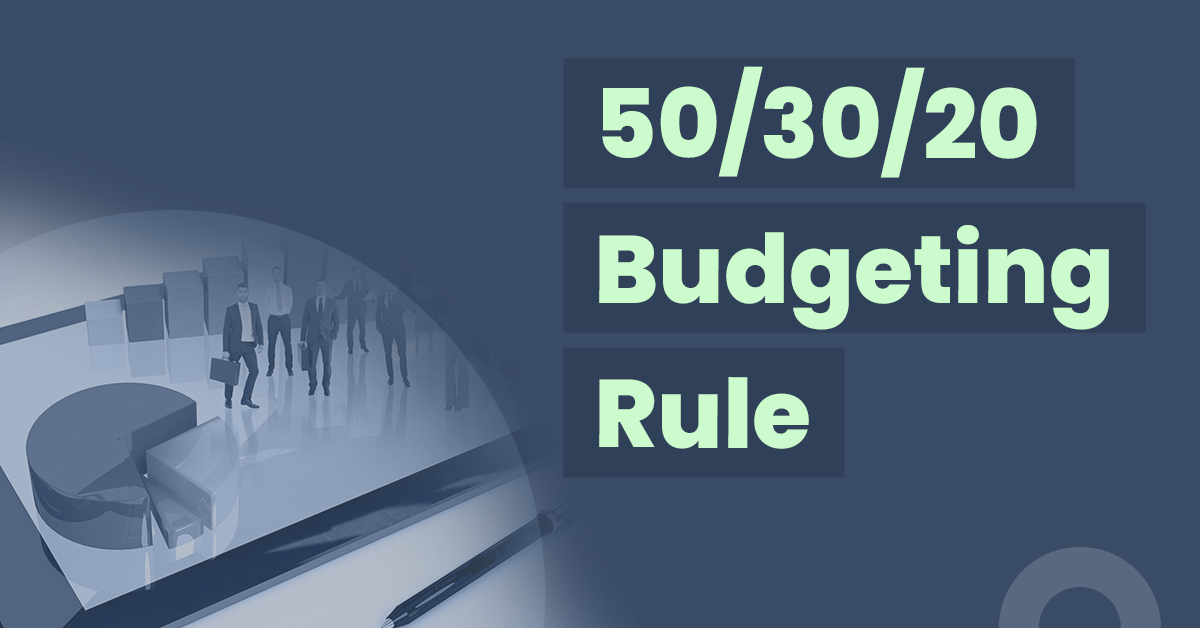50/30/20 Budgeting Rule – Follow this rule to build an expense budget


Effective budgeting can help you keep a tab on your expenses and motivate you to avoid unnecessary purchases. The 50-30-20 budget rule speaks of the financial discipline that can guide you to keep your spending habit on the right track. As a result, you can make substantial savings for emergency or post-retirement expenses.
Moreover, with properly administered spending habits, you can save money to fulfil your capital-intensive large-sized expenses. So, let’s discover the 50-30-20 budgeting discipline and how you can benefit from it.
What Is the 50-30-20 Budgeting Rule?
50-30-20 budget is a discipline advocated by Elizabeth Warren on financial management. The concept appeared first in the book, All Your Worth: The Ultimate Lifetime Money Plan, in which she stated the importance of splitting the total earnings into three broad categories.
According to this discipline, you should allocate 50% of your total budget to needs, 30% to wants and 20% to future investments and savings. If you stick to this budgeting discipline, meeting your future financial objectives will be much easier.
Expense Categories of 50-30-20 Budget
Before you start budgeting with the 50-30-20 rule, you must clearly understand needs, wants, and savings, the three categories of financial discipline. Here is a basic idea of the three.
- Needs
Needs refer to your necessary expenses, without which it will be difficult for you to maintain your livelihood. Following are some of these unavoidable expenses:
- House Rent
- Basic household groceries
- Electricity bills
- Healthcare expenses
- Insurance premiums
- Installments
- Transportation expenses
In this section, you must not count your lifestyle expenses, including spending on dining out, getting subscriptions for OTT platforms, etc.
Nevertheless, the monthly income varies from one individual to another, and so is the basic need. If your expenses on basic needs exceed 50% of your earnings, you should make necessary changes to help you meet the goal.
- Wants
The second category of the 50-30-20 budget is ‘wants’ or avoidable expenses. In this category, you need to include expenses for things/items without which it is not impossible to sustain your life and livelihood. You can list the following under this ‘wants’ category.
- Expenditure on clothes
- Expenses on vacation trips
- Subscription charges for OTT platforms
- Non-essential groceries
- Expenses of dining out
- Movie outing
You can add these expenditures to upgrade your lifestyle. However, if your total expenditure in this category exceeds 30%, you must limit your purchases to ensure you spend your money wisely.
- Savings and/or Investing
Now that you have spent 80% of your total earnings on your needs and wants, you should also keep aside the remaining amount towards savings. It will help ensure you have sufficient money to tackle your emergency expenses. Moreover, you can commit to your post-retirement expenses, get effective treatment during emergencies, bear your children’s education expenses, etc.
Advantages of Following the 50-30-20 Budgeting Rule
Following are some of the benefits you will get after abiding by this financial discipline:
- Financial discipline – Although you may need to engage in a basic calculation, the 50-30-20 budgeting rule makes it easier for you to stay under proper financial discipline. You need to track your expenses and list them under three categories of expenditure (Needs-Wants-Savings).
- Realistic planning – Since the rule is realistic and very easy to follow and track, it can significantly help you to accomplish your financial goals in the long term.
- Increase in Savings – After properly complying with this discipline, you can save 20% of your income every month. You must avoid overspending and fulfil your target to contribute adequately towards your contingency fund.
Stepwise Guide to Build Your 50-30-20 Expense Budget
Here is how you can build your expense budget by using the 50-30-20 rule of budgeting.
- Calculate Your Net Income
You need to calculate your take-home salary or net monthly income. For this, you will have to deduct the tax amount you need to pay every month from your gross earnings. If your organisation give you the salary after TDS (Tax Deducted at Source), and other allowances you can avoid this calculation as you do not need to pay any tax after this.
- Categorise Your Expenses for the Last Month
At this stage, you will have to track all the expenses you have made in the previous month. If you purchase your necessary items online or using debit/credit cards, you can go through your account statement to clearly see the last month’s spending.
After this, you will have to make a table for needs, wants, and savings and sort all the expenses, making the required entries on the chart.
- Match Your Expenses to Build a 50-30-20 Expense Budget
You will get a clear picture of your financial habit once you start to make entries of your spending on the expense budget table. It will also help you know whether you spent more than necessary on your wants or non-essential expenses and understand how you can cut down on your expenses on ‘wants’.
This way, you can stay focused and meet your monthly target of saving 20% of your income. Increasing your savings will help you to enhance future investments for goals.
Example Illustrating Application of the 50-30-20 Budget
Let’s assume that your CTC (Cost to Company) is ₹ 60,000; after all the deductions, you get ₹ 50,000 per month at your hand. In this circumstance, your spending should be as mentioned below after applying the rule of a 50-30-20 budget.
- Monthly expenditure on needs = ₹ 50,000 x 50% = ₹ 25,000
- Monthly expenditure on wants = ₹ 50,000 x 30% = ₹ 15,000
- Monthly expenditure on savings = ₹ 50,000 x 20% = ₹ 10,000
Where Can You Save?
Following are some places where you can save money for the future.
- Mutual Funds: By saving in mutual funds, you can get higher returns in the long run than bank deposits. It can also help you beat the inflation rate.
- Stocks: Stocks can give you a higher return than mutual funds, but it involves higher levels of risk.
- Provident Funds: In provident funds, you and your employee contribute equal amounts of credit and build a corpus over time. You can withdraw the amount post-retirement. You will also get a certain fixed interest on your savings amount.
- ELSS: ELSS, or Equity-Linked Savings Scheme, is a type of mutual fund that can help you save and grow your money and reduce your tax obligations to a certain extent.
- NPS: NPS, or National Pension Scheme, is a voluntary savings plan for retirement, helping you accumulate and grow your capital at a substantially low charge.
Final Word
By following the financial discipline of the 50-30-20 budget, you can accumulate a significant corpus over time to confront your emergency expenses and meet your future financial goals. The rule is quite easy to follow and track your spending as you have to consider only three categorisations, namely ‘needs’, ‘wants’ and ‘savings’.
Frequently Asked Questions
Is there any alternative to the 50-30-20 budget rule?
Yes, there are also alternative budgeting rules like 80-20 and 70-20-10. According to the 80-20 budgeting, you can save 20% of your total earnings and spend 80% on your needs and wants. On the other hand, the 70-20-10 rule advocates that you can put 70% of your income aside to make your living expenses and 20% for saving and future investments. You can use the remaining 10% of your earnings for debt repayments or donations or other wants.
What are some of the investment options that can help me get a regular income after my retirement?
You can invest in the following options to get a regular post-retirement income:
Annuity plans extended by insurance companies
Fixed deposits
Senior citizen savings scheme
Post-office-based NCS (National Savings Certificate) scheme
Equity Linked Savings Scheme (ELSS)
National Pension Scheme (NPS)
What are some of the downsides of the 50-30-20 rule?
For certain expenses, it may be difficult for you to distinguish between needs and wants and categorise them accordingly (for example, educational expenses ). Furthermore, if someone has a lower income, he/she will find it challenging to save 20% of their income.




